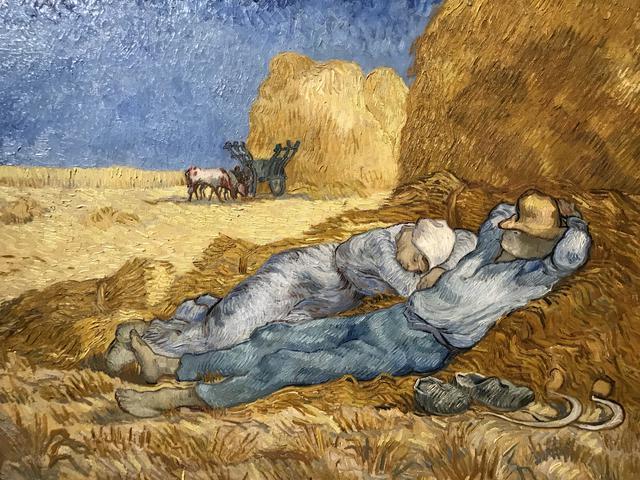La Meridiana or La Siesta

La Meridiana, also known as La Siesta, is a stunning painting by Vincent Van Gogh that showcases his deep admiration for the peasant genre, particularly the works of Jean-François Millet. Van Gogh was greatly inspired by Millet's portrayal of the afflicted and low-income individuals in their true environment, which he believed was a more authentic representation of humanity. In his own interpretation of Millet's painting, Van Gogh infused his unique style and artistic vision, creating a piece that has become just as iconic as the original. This painting was created during a period of intense introspection for Van Gogh, following the infamous incident where he cut off his own ear. Despite his struggles with mental health, Van Gogh's artistic genius shone through in La Meridiana, as he explored the symbolic and metaphysical power of color.
The painting La Meridiana is a testament to Van Gogh's mastery of color and his ability to convey emotion through his art. The intense use of yellow in the painting reflects Van Gogh's mental state at the time, showcasing a sense of tranquility and inner peace despite his confinement in a sanatorium. The exaggerated colors and bold brushstrokes in La Meridiana capture the essence of Van Gogh's unique artistic style, which continues to captivate audiences around the world. As tourists explore the rich cultural heritage of Paris, a visit to see La Meridiana at a local museum or gallery provides a glimpse into the mind of one of the most influential artists in history.
Van Gogh's fascination with the peasant genre and his deep connection to Millet's work are evident in La Meridiana, where he pays homage to the beauty and dignity of everyday life. The painting serves as a poignant reminder of Van Gogh's enduring legacy and his unwavering commitment to capturing the essence of humanity through art. Whether visitors are art enthusiasts or simply curious travelers, experiencing the power and emotion of La Meridiana is sure to leave a lasting impression. With its vibrant colors, expressive brushwork, and profound symbolism, this masterpiece by Van Gogh invites viewers to contemplate the complexities of the human experience and the transformative power of art.
In conclusion, La Meridiana or La Siesta stands as a testament to Vincent Van Gogh's artistic brilliance and his profound connection to the peasant genre. Through his unique interpretation of Millet's work, Van Gogh created a masterpiece that continues to inspire and captivate audiences worldwide. As tourists explore the vibrant cultural landscape of Paris, a visit to see La Meridiana offers a glimpse into the inner world of one of the most celebrated artists in history. With its rich symbolism, bold colors, and emotional depth, this painting invites viewers to reflect on the beauty of everyday life and the enduring power of art to transcend time and space.
© ChatGPT 3.5
Van Gogh made twenty-one paintings in Saint-Rémy that were copies of Millet, although Van Gogh's intention was more as a tribute. As he saw it, it was closer to translating it into another language or giving his own perspective to something that he already considered beautiful and when seeing this painting with Millet's The Harvesters, one can realize the juxtaposition that exists between realism vs romanticism, despite being an interpretation. Van Gogh began this series in 1889 and continued it until the fall with black and white prints that he requested from his brother.
Something that both painters share, apart from a strong Christian belief, is that in both versions important ideological values can be seen, especially in the egalitarian fact where sex does not matter, work is for everyone and therefore everyone deserves to rest after a long day Obviously both share this vision for rural France that inspires them so much and that makes them understand that artistic beauty can emerge from any environment and from any character and it doesn't even have to be something elaborate, but it can also represent a quiet moment between two people. , like resting after work.